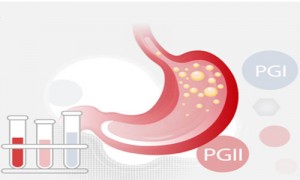Biomarkers for Chronic Atrophic Gastritis: Research Advances
Chronic Atrophic Gastritis (CAG) is a common chronic gastric disease characterized by gradual loss of gastric mucosal glands and diminished gastric function. As an important stage of gastric precancerous lesions, early diagnosis and monitoring of CAG are crucial for preventing the development of gastric cancer. In this paper, we will discuss the current major biomarkers used to diagnose and monitor CAG and their clinical application value.
I. Serologic BioMarkers
- Pepsinogen (PG)The PGⅠ/PGⅡ ratio (PGⅠ/PGⅡ) is the most widely used serologic marker for CAG.
- Decreased levels of PGⅠ and PGⅠ/PGⅡ ratio are significantly correlated with the degree of gastric body atrophy.
- Japanese and European guidelines have included PG testing in gastric cancer screening programs
- Reflects endocrine functional status of the gastric sinus.
- Decreases in atrophy of the gastric sinus and may increase in atrophy of the gastric body.
- Combined with PG to improve CAG diagnostic accuracy
3.Anti-Parietal Cell Antibodies (APCA) and Anti-Intrinsic Factor Antibodies (AIFA)
- Specific markers for autoimmune gastritis.
- Helpful in differentiating autoimmune gastritis from other types of CAG
2. Histological Biomarkers
- CDX2 and MUC2
- A signature molecule of intestinal chemotaxis
- Upregulation indicates gastric mucosal intestinalization.
- p53 and Ki-67
- Indicators of cell proliferation and abnormal differentiation.
- Help assess cancer risk in CAG.
- Helicobacter pylori (H. pylori)-Related Markers
- Detection of virulence factors such as CagA and VacA.
- Urea breath test (UBT) and stool antigen test.
3. Emerging Molecular Biomarkers
- microRNAs
- miR-21, miR-155 and others are aberrantly expressed in CAG
- Potential diagnostic and prognostic value.
- DNA Methylation Markers
- Abnormal methylation patterns in the promoter regions of certain genes
- Methylation status of genes such as CDH1 and RPRM
- Metabolomic Biomarkers
- Changes in specific metabolite profiles reflect the state of the gastric mucosa
- New ideas for non-invasive diagnostics
4. Clinical Applications and Future Perspectives
Combined testing of biomarkers can significantly improve the sensitivity and specificity of CAG diagnosis. In the future, the integrated multi-omics analysis is expected to provide a more comprehensive combination of biomarkers for precise typing, risk stratification and individualized monitoring of CAG.
We Baysen Medical specialize in the research and development of diagnostic reagents for digestive system diseases, and have developed PGⅠ, PGⅡ and G-17 based co-testing kits with high sensitivity and specificity, which can provide reliable screening tools for CAG in the clinic. We will continue to follow the research progress in this field and promote the translational application of more innovative markers.
Post time: Jun-30-2025







